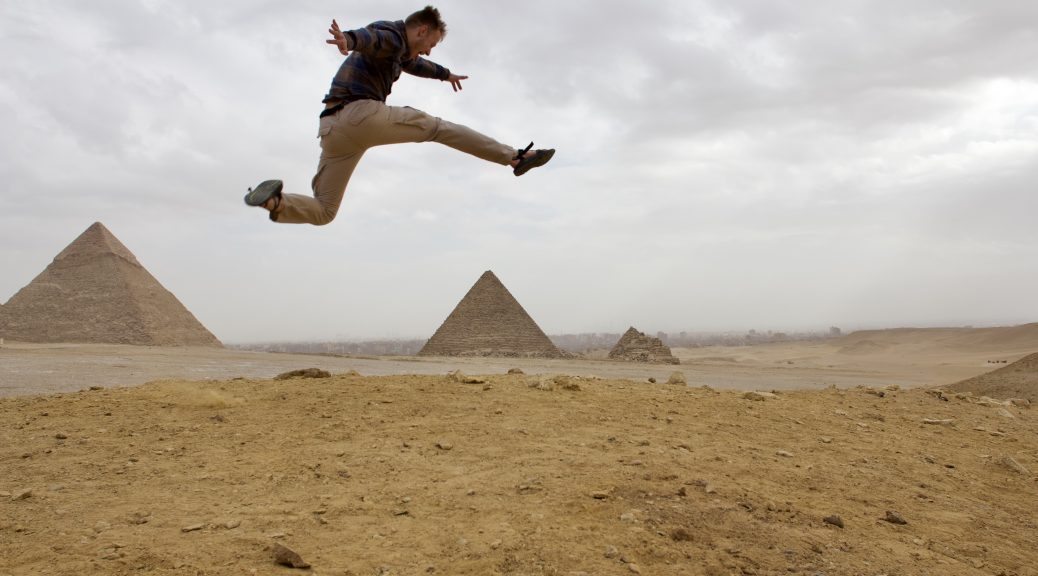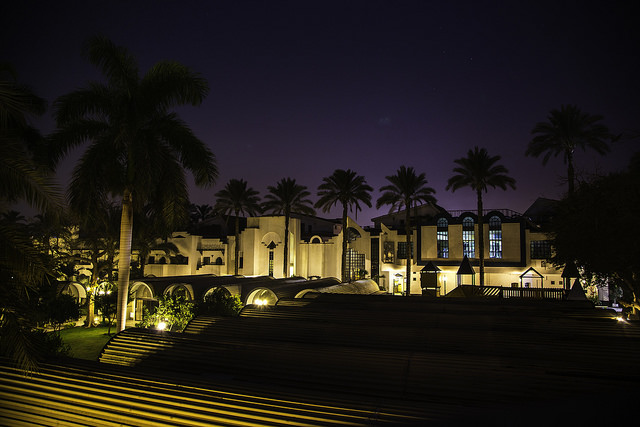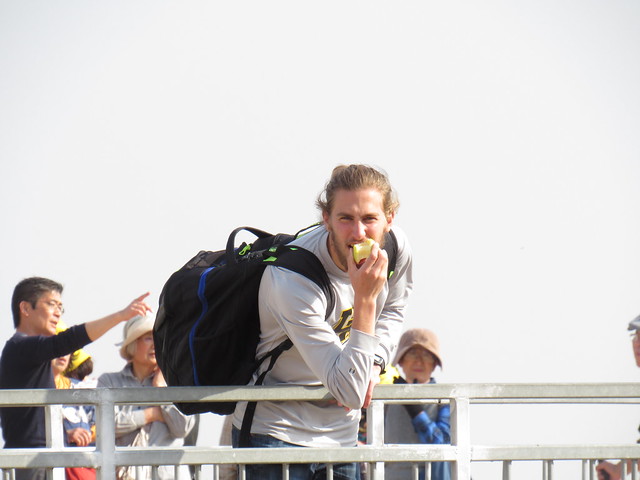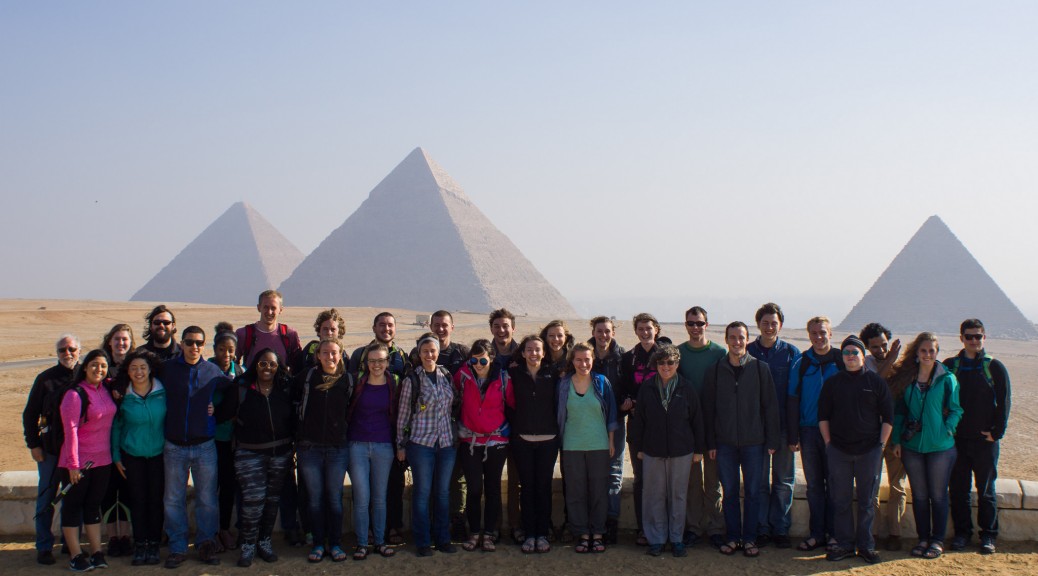1/25/2017
Hello from Jordan!
This is our first night in a country other than Egypt, and it is safe to say that we are all excited to see what adventures this new place holds. But first, here is a quick summary of our time in Egypt.
When we first arrived in Egypt, we drove through crowded, loud streets to the infamous Ambassador Hotel. Little did we know that the madness in the streets was only a fraction of the Cairo traffic we would experience over the next week. We spent three nights in the Ambassador Hotel, touring ancient ruins and papyrus shops during the day, and getting to know each other and the night life of Cairo in the evening.
We left Cairo and drove for a few hours through the desert to Anafora, an Orthoox Christian Retreat Center. The compound was full of white buildings with colorful carpets and lots of cats. While at Anafora we explored their grounds, which featured an impressive replica of a Biblical-era tabernacle and mud brick village. We also participated in their Epiphany celebration service and candle lighting. Anafora was a stark contrast to the busyness of Cairo, and many of us found it a helpful place to unwind from the travel and chaos of the first few days.
After Anafora we flew to Luxor, another city located along the Nile River. Luxor was full of ancient ruins such as the Karnak and Luxor Temple. It also had a small market where many of the shopkeepers were open for conversation as well as business. A highlight of Luxor, and of the trip so far, was a hot air balloon ride featuring breathtaking views of the Nile and surrounding countryside just as the sun was burning the mist from the fields.
We finished our time in Egypt at Saint Catherine’s monastery, where we stayed for two nights. It took around six hours to drive through the Sinai desert, passing under the Suez Canal and through various military checkpoints. The monastery is at the base of a mountain range that includes Mount Sinai, one of the most likely options for the mountain that Moses climbed when he received the Ten Commandments. Saint Catherine’s is also the home of the burning bush, and several of the oldest relics and manuscripts connected to Christianity. On our second day at Saint Catherine’s, we climbed Mount Sinai. The mountain posed a serious challenge, but we reached the summit in plenty of time to enjoy the incredible sunset view and sing a few hymns that seemed to fill the thin air with praise.
We left Saint Catherine’s early Wednesday morning and spent most of the day traveling east through the Sinai and then along the Gulf of Acaba, heading towards the Israeli border. At the border we said goodbye to Samer, an Egyptian who had been our guide through Egypt since day one. He had welcomed us into his country with oranges and guava juice, and had filled each day with knowledgeable lectures and an abundance of fun facts about the region. Leaving Samer at the border was definitely a loss, and it also revealed yet again our privilege as American citizens to travel basically freely between countries.
We crossed in to Israel, where the buildings and people immediately looked different than what we had seen in Egypt. About half an hour later we crossed into Jordan, where the buildings and people again looked different. Three countries in one day is a bit of a challenge for a group of thirty-three, but now we are settled into Jordan for the next few days.
Our time in the Middle East has already been a whirl wind of new places, faces, and food. As one member said, if we went home today we would think back on the week and a half in Egypt as a really great and transforming cross-cultural. It is incredible to realize we still have three more months of discoveries to make and friendships to build!
Peace to you all!
-Grace Burkhart for the group








